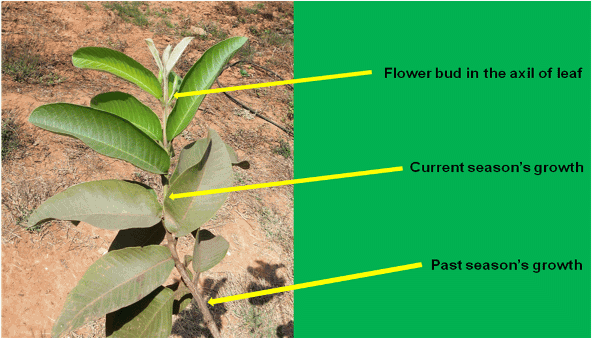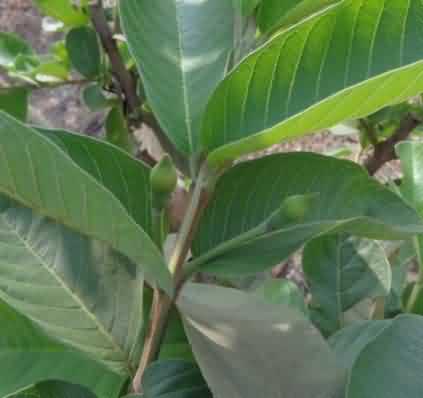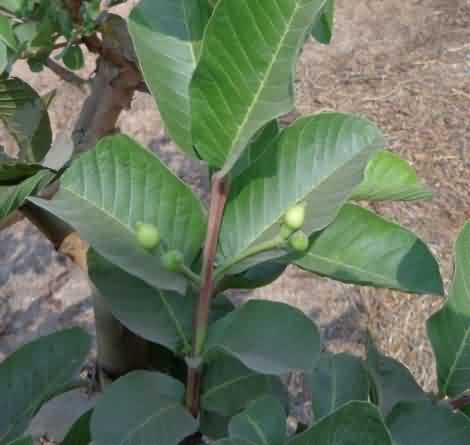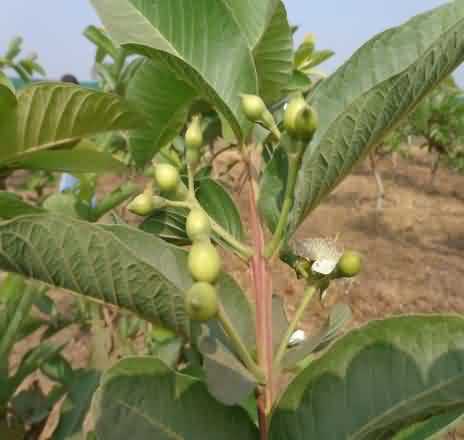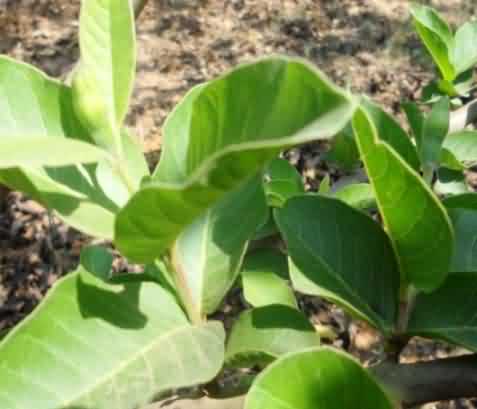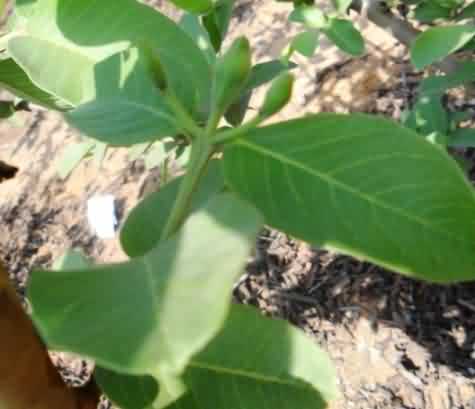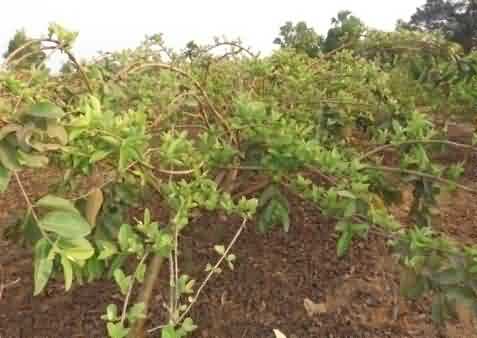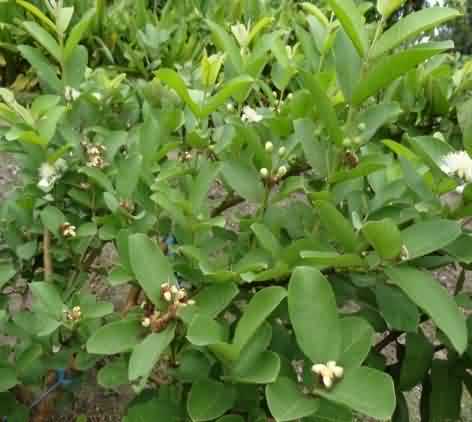अमरूद में फसल नियमितिकरण के लिए एक सरल तकनीक: ब्रांच बैंडिग या शाखा मोडना
Guava (Psidium guajava L.) is a commercially important fruit crop belonging to the family Myrtaceae. It is widely grown all over the tropical and subtropical parts of India viz., Maharashtra, Bihar, Uttar Pradesh, Odisha, West Bengal, Chhattisgarh, Gujarat, Madhya Pradesh, Andhra Pradesh, Punjab, Tamil Nadu, and Karnataka.
Over the past decade (2001 -2010) there has been a 1.3 fold increase in area (0.16 to 0.21 million hectares) and 1.4 fold increase in production (1.72 to 2.46 million tonnes) of guava. However, its productivity has not yet increased significantly. Among several reasons for low productivity, non-adoption of crop regulation is one of the most important reasons.
Crop regulation can be practiced through various techniques viz., pruning, use of chemicals and plant growth regulators, branch bending, etc. Of these, branch bending is the simplest and cost- effective technique of crop regulation.
Bearing habit of guava and branch bending
Guava plant bears flowers on current season’s growth or new shoots irrespective of time of year. New shoots are produced on mature wood or past season’s growth laterally or terminally. In general flowers are produced in the axils of leaves as solitary or in cymes of two or three flowers.
The current season’s flowering shoot continues its growth till fruit setting. After fruit setting the terminal bud ceases its growth until the next growing season. Sometimes, flowers appear at the tip of the current season’s growth. Such shoots do not grow further.
Thus, crop load depends upon the number of new shoots. Emergence of more number of lateral shoots on a branch means more flowering and fruiting. Upright/erect growing branches produce new lateral shoots near to their top end. The lower buds of such branches remain dormant because of apical dominance phenomenon.
The tip of the branches produces a plant hormone known as auxin that moves downwards and inhibits the growth and development of lateral buds. This suppressive effect of auxin on lateral buds gets diluted in spreading, droopy or horizontally growing branches and such branches produce enormous number of new lateral shoots.
Therefore, guava branches can be induced to promote more numbers of lateral shoots by adoption of branch bending technique. Bending of branches invigorates or activates the dormant lateral buds by means of suppressing the apical dominance. Besides, this technique induces more flowering by maintaining higher C: N ratio and stimulating proline biosynthesis under an episode of stress.
1(a) Flowering on lateral shoot
1(b) Flowering on terminal shoot
1(c) Solitary flowers (axillary origin)
1(d) Cyme of two and three flowers (axillary origin)
1(e) Terminal flowering
Fig.1 Bearing habit of guava
Crop regulation and branch bending
Under subtropical climate, guava exhibits two bahars (flowering) in a year whereas, in tropical climate produces three bahars. The details of bahars are given below-
|
Name of bahar/ flowering |
Flowering season |
Harvesting season |
|
Ambe bahar
|
Spring (February-March) |
Rainy (July-September) |
|
Mrig bahar
|
Monsoon (June-July) |
Winter (November-January) |
|
Hasth bahar
|
Autumn (October-November) |
Spring (February-April) |
Throughout India, mrig bahar is preferred over ambe and hasth bahars because rainy season guava crop is insipid, watery, less nutritive and is infested by fruit flies. Winter season crop is superior in terms of fruit size, taste, shelf life and incidence of pests and diseases.
Hasth bahar is observed in western and southern India. The quality of fruits is good, but yield is very low. However these offseason fruits fetch good market price.
Guava growers are advised for crop regulation so as to take only one crop per year because bearing crops throughout the year results in no rest period for the plants and lower yields at different times of the year.
Crop regulationby adopting branch bending technique is an economic technique wherein an orchardist can induce new fruit bearing shoots in guava in any season and can regulate fruit production according to local market.
The technique of bending
Branch bending is a very simple technique to adopt in an orchard planted at conventional plant density (5x5m spacing). However, in case of high density (less than 5x5m spacing) orchard its adoption is not feasible as bending requires more space and plant becomes spreading in nature. Branch bending can be performed in 2 years old plant and it can be continued till 8 years. Steps to be followed for bending are:-
- Apply half of the fertilizer requirement of the crop 15 -20 days prior to bending.
- Remove small shoots, leaves, fruits, flowers from the branches keeping 10-12 pairs of leaves intact at the terminal portion of each branch.
- Bend down the branches to open up the central canopy. To bend the branches pressure should be applied at the base and it should gradually progress to the tip portion.
- Untie the bent branches when the new shootlets are 1 cm in length.
- Apply remaining half amount of fertilizer at marble stage of fruit growth.
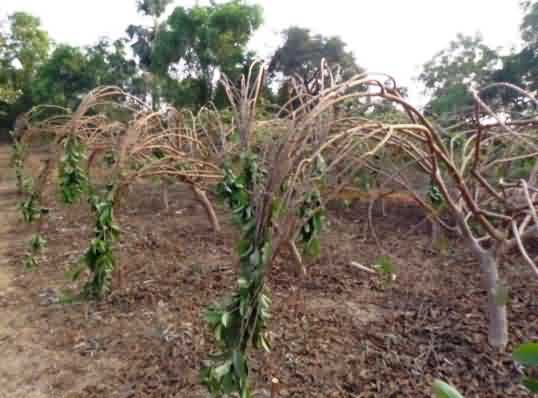
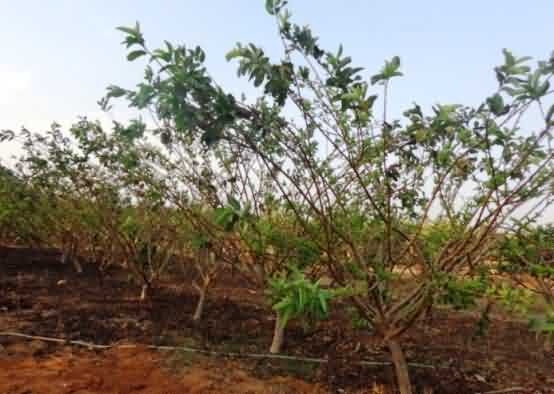
2(a) Bending of branches 2(b) Untying of bent branches
Fig.2 Branch bending in guava
Time of bending
Though bending can be practiced throughout the year, an orchardist is advised not to practice it during rainy and winter season to avoid crop losses due to flower drop and slow growth, respectively. Bending in summer and autumn season is considered desirable to get more yields.
|
|
Summer bending |
Autumn bending |
|
Time of bending |
April-June |
September-November |
|
Shoot emergence |
8-10 days after bending |
20-25 days after bending |
|
Flowering |
40-45 days after bending |
60-65 days after bending |
Advantages of branch bending
- This technique is very simple and easy to practice.
- It is eco-friendly and cost effective as it does not require costly and hazardous chemicals for crop regulation.
- Branch bending opens the central canopy of the plant and allows better penetration of sunlight and facilitates aeration in canopy.
- It minimizes incidence of diseases and insect pests.
- Bending increases number of shoots by activating more number of dormant lateral buds, thus inducing profuse flowering and fruiting without much removal of the biomass.
- It augments uniform flowering and fruiting.
3(c) More fruit yield 3(b) Profuse flowering 3(a) More lateral shoots
Fig.3 Benefits of branch bending in guava
This technique with its scientific base has a great potential in enhancing the productivity of guava through regulating the crop and producing more number of lateral shoots. Orchardist can regulate the guava production as per the market demand and harvest crop before and after the glut in market. Thus, guava orcharding can be made more profitable by adopting this simple, eco-friendly and cost- effective technique of branch bending.
Authors:
Deepa Samant
Central Horticultural Experiment Station (IIHR-ICAR),
Aiginia, Bhubaneswar 751 019, Odisha
Email:


